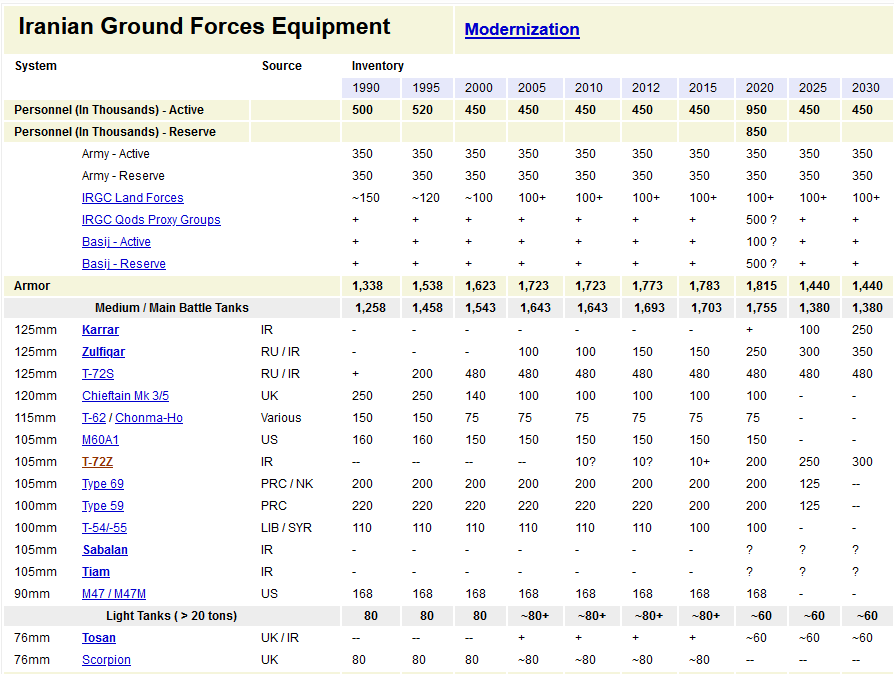Putting a few things together, my theory on why Russia is suddenly pulling a bunch of T-55s out from depots.
Iran bought a couple hundred T-55s and T-59s. They developed an indigenous upgrade for those tanks, the confusingly named T-72Z, that, among other things, replaces the 100mm gun with a 105mm gun. en.wikipedia.org/wiki/Type_72Z
The numbers from globalsecurity.org (no idea of their sources, but there aren't any alternative numbers available) indicate the pace of those upgrades increased rapidly in the late 2010s, going from 10ish in 2015 to some 230 now. globalsecurity.org/military/world… 

Inevitable result of that? A whole bunch of 100mm tank shells lying around that can only be used by a dwindling number of old tanks. Then according to Western news media, Iran started selling ammo to Russia last month.
A natural choice of ammo for Iran to look to sell would be the now-mostly-useless 100mm tank shells. Which, in sufficient numbers, could mean it now makes some sense for Russia to pull out T-55s to use as easy-to-train-mobiks-on indirect fire platforms.
• • •
Missing some Tweet in this thread? You can try to
force a refresh








